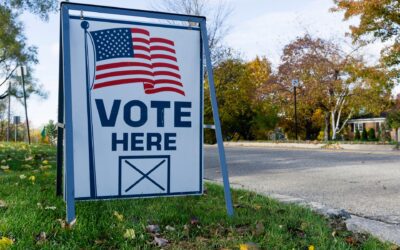With the 113th Congress returning to D.C. for its final weeks of this session, it is important for the public to weigh in on the “tax extenders” – the obscure set of policy choices that have an immense impact on family incomes, the economy and the deficit – which will be considered. The pundits and elites have rallied around the bi-partisan support for R & D tax credits and the media report a deal that includes making those and the college-tuition tax credits permanent; not slated for permanence in this deal are the Child Tax Credit or the Earned Income Tax Credit. Congressional leaders considering this deal should know that they are threatening to walk away from the tax credits that have the most support with the public.
Democracy Corps conducted surveys in the Senate and House battlegrounds during the last two months before the 2014 election with the off-year electorate. In those surveys, we tested the different tax extenders that would be before the Congress.[1]
The two tax credits that are the most popular choices for permanence and earn the most intense support among voters are the Child Tax Credit for lower income and middle class working families with children and the $4,000 a year tax credit for college-tuition and fees.
- House battleground: 88 percent favor making the college-tuition credit permanent, 59 percent strongly; 85 percent favor making the Child Tax Credit permanent, 58 percent strongly.
- Senate battleground: 83 percent favor making the Child Tax Credit permanent, 59 percent strongly; 82 percent favor making the college-tuition credit permanent, 57 percent strongly.
Some have described the college-tuition credit as a “middle class” policy offer and the Child Tax Credit as targeted to lower income families, but that analysis misses the extent to which working and middle class voters are struggling in this economy with jobs that don’t pay enough. They are looking for help making college affordable and want help lessening the burden of children on working families. Making these credits permanent has broad support and listening to the voters in these contested House districts and Senate states is key to lawmakers being relevant when it comes to the new economy as well as to getting people to view politics as relevant for them.
The Rising American Electorate of minority, Millennial, and unmarried women voters respond to both credits with great intensity. Remember, they will constitute one-half of the electorate in 2016.
- House battleground: 87 percent of the RAE support making the college-tuition credit permanent, 63 percent strongly; 84 percent support making the Child Tax Credit permanent, 59 percent strongly.
- Senate battleground: 86 percent of the RAE support making the Child Tax Credit permanent, 66 percent strongly; 87 percent support making the college-tuition credit permanent, 61 percent strongly.
But as Democrats begin the broader discussion of how to appeal to the white working class, note that white non-college educated voters also put the child tax credit at the top of their list. Both are clearly central to the Democrats as they move forward.
- House battleground: 87 percent of white non-college voters favor making the college-tuition credit permanent, 61 percent strongly; 87 percent favor making the Child Tax Credit permanent, 56 percent strongly.
- Senate battleground: 84 percent of white non-college voters favor making the Child Tax Credit permanent, 61 percent strongly; 83 percent favor making the college-tuition credit permanent, 54 percent strongly.
There is broad support for extending R & D tax credits, but note it does not have the intensity and breadth of support that the public gives to the college-tuition and Child Tax Credits.
- House battleground: 83 percent favor making the R & D credits permanent, 48 percent strongly.
- Senate battleground: 80 percent support favor the R & D credits permanent, 50 percent strongly.
[1] House Battleground survey of 1,100 likely 2014 voters in the 66 most competitive House districts, Oct. 4-9, 2014; Senate Battleground survey of 1,000 likely 2014 voters in the 12 most competitive Senate states, Sept. 20-24, 2014.




